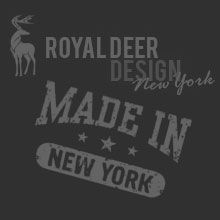Single-page websites are increasing in popularity among web designers, both for personal projects as well as client sites. The attraction is clear: with the use of scripts such as jQuery, Ajax, and Parallax, single-page websites have brought on a whole new level of interactivity for their users. One-page sites make a lot of sense when content load is small, when the topics are closely related, or when the design works best on a single page.
Don’t be tricked into thinking that designer sites are the only appropriate subjects for single-page designs. App websites and product sites, such as books, also showcase a one-page design. So, how do you know if a single-page site works better for your project than one with multiple pages? Consider the following questions:
How much content do I have?
Sites with a great deal of content will have more information than will fit on a single-page design. Consider users who may view your single page site on a mobile device or tablet. The more content on a page, the more scrolling is necessary. Too much scrolling lacks the fun-factor, and you may lose visitors. If you have plenty of content but have your heart set on a single page design, are you able to condense it and still keep the content keyword-rich for SEO? A general guideline is if you have more than 10 pages of information to share, you will benefit from a multiple-page structure.
Is the goal of my site to sell a specific product?
By keeping the focus on the product without overloading the consumer, single-page designs are a great solution for selling single products. A single page website is a good choice for personal portfolios, a new service promotional landing page, musicians, authors, or a new product launch. Using a single page design forces you to strip the content down to the essentials, leaving more room for visual and creative stimulation.
Likewise, if you have more than one product to showcase, multiple pages with detailed information may be exactly what you need to communicate clearly to the viewer.
What is my comfort level with Ajax and JavaScript?
A great deal of single-page sites utilize Ajax and JS for navigation and other fundamentals. Use of these tools provides a valuable way to create an orderly site that still contains a fair amount of content.
Does my content follow a theme?
It will confuse your visitors if you put unrelated content on a single page. If your content is too varied, stick with a multiple- page design.




